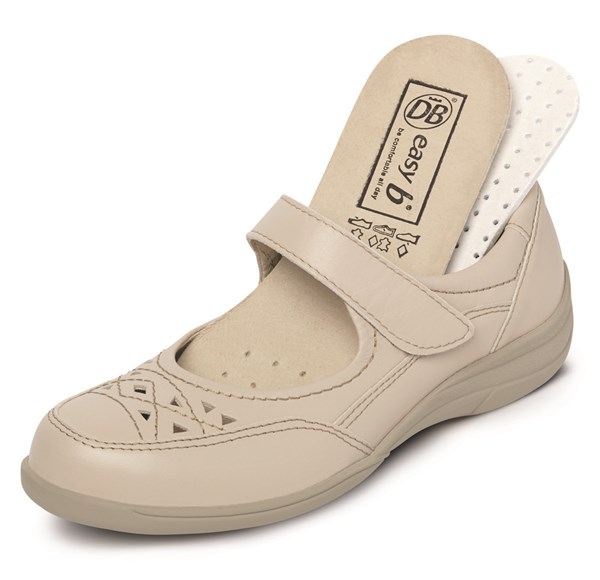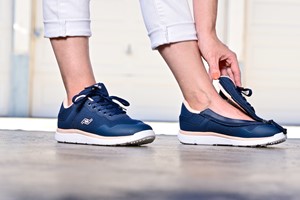Removeable insoles in shoes enable orthotics to be fitted easily when required.
Orthotics is a specialty within the medical field concerned with the design, manufacture and application of externally applied devices to the body with the purpose of improving the health and mobility of an individual. Orthotics and arch supports are regularly recommended by podiatrists for the relief of foot and heel pain.
Often, a biomechanical mal-alignment, or lack of stability from the foot region can cause abnormal loads on the tissues of the foot and heel, so that pain can develop as a result. Many of these problems can be corrected with the use of orthotics and arch supports, fitted by experts as an important part of the injury treatment. Foot orthoses comprise of a custom-made insert or footbed fitted into a shoe. These inserts provide support for the foot, by redistributing ground reaction forces as well as realigning foot joints while standing, walking or running, thus altering slightly the angles at which the foot strikes the ground.
Properly designed foot orthotics compensate for impaired foot function by controlling abnormal motion across the joints of the foot. This can, in turn, result in a dramatic improvement in symptoms. Orthotics will control the position and motion of your foot and may prevent the development of pain and disability. However, orthotics will not change the underlying structure of the adult foot. Therefore, if they are not worn, abnormal function will return.
Footwear plays a key role in our day to day lives and is paramount to our continued health and mobility. When we develop foot problems, it is essential to take great care with the selection of the type of shoe we wear, the way it fits and how it functions. Sufferers should look for shoes that feature removeable, leather insoles for the insertion of orthotics and styles that are recommended for their specific condition. Diabetics, for instance, should seek footwear with seam free toe boxes and side panels. Many different types of conditions require specific design characteristics:
Diabetes: Fully lined shoes with care taken to leave no rough edges and few internal seams.
Rheumatoid Arthritis: Extra width and padding.
Lymph 0edema: Extra width, padding, easy access and variable fitting.
Forefoot deformities, Hallux valgus, clawed toes: Extra width, but also extra depth in the toe box.
A foot orthosis should fit snugly into a shoe with a strong heel counter and a lace or strap fastening. Shoes and orthotics should always work in harmony to provide the wearer with support and comfort.
The style shown below has 2 removable in-socks, allowing orthotics to be fitted if required.
Blog home >
Recent Posts
-
Friendly Shoes join the HFG-a warm welcome to you.
Introducing Friendly Shoes, the UK’s first fully adaptive footwear brand
Designed by an occupational therapist, …
read more
-
Cosyfeet achieves platinum in US and UK
Cosyfeet Achieves Platinum in US and UK
Cosyfeet, the Somerset-based retailer of premium footwear for people with …
read more
-
Cosyfeet wins Platinum with Feefo
Cosyfeet Wins Platinum with Feefo
Cosyfeet is the proud recipient of a Feefo Platinum Trusted Service award for 2022 …
read more




